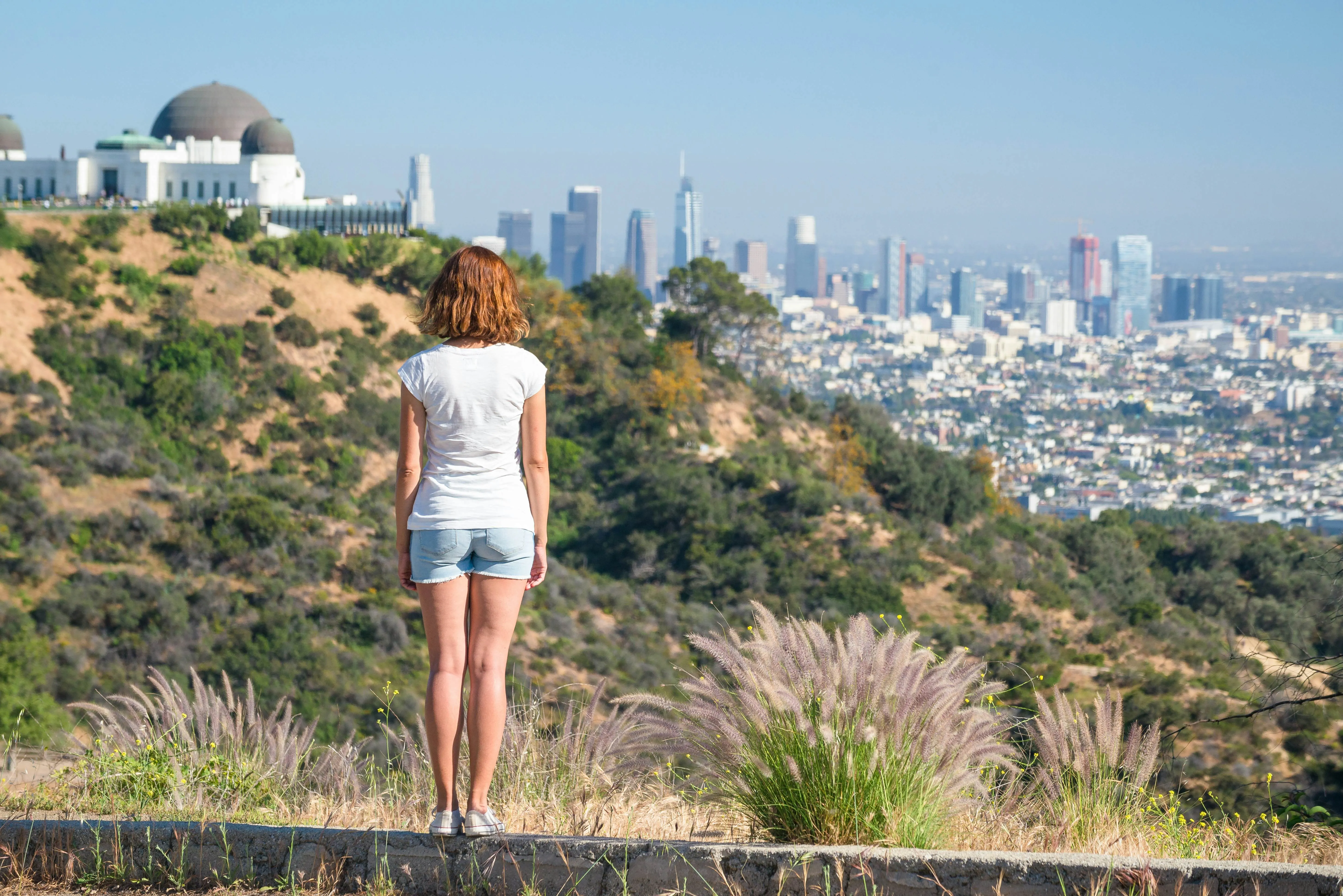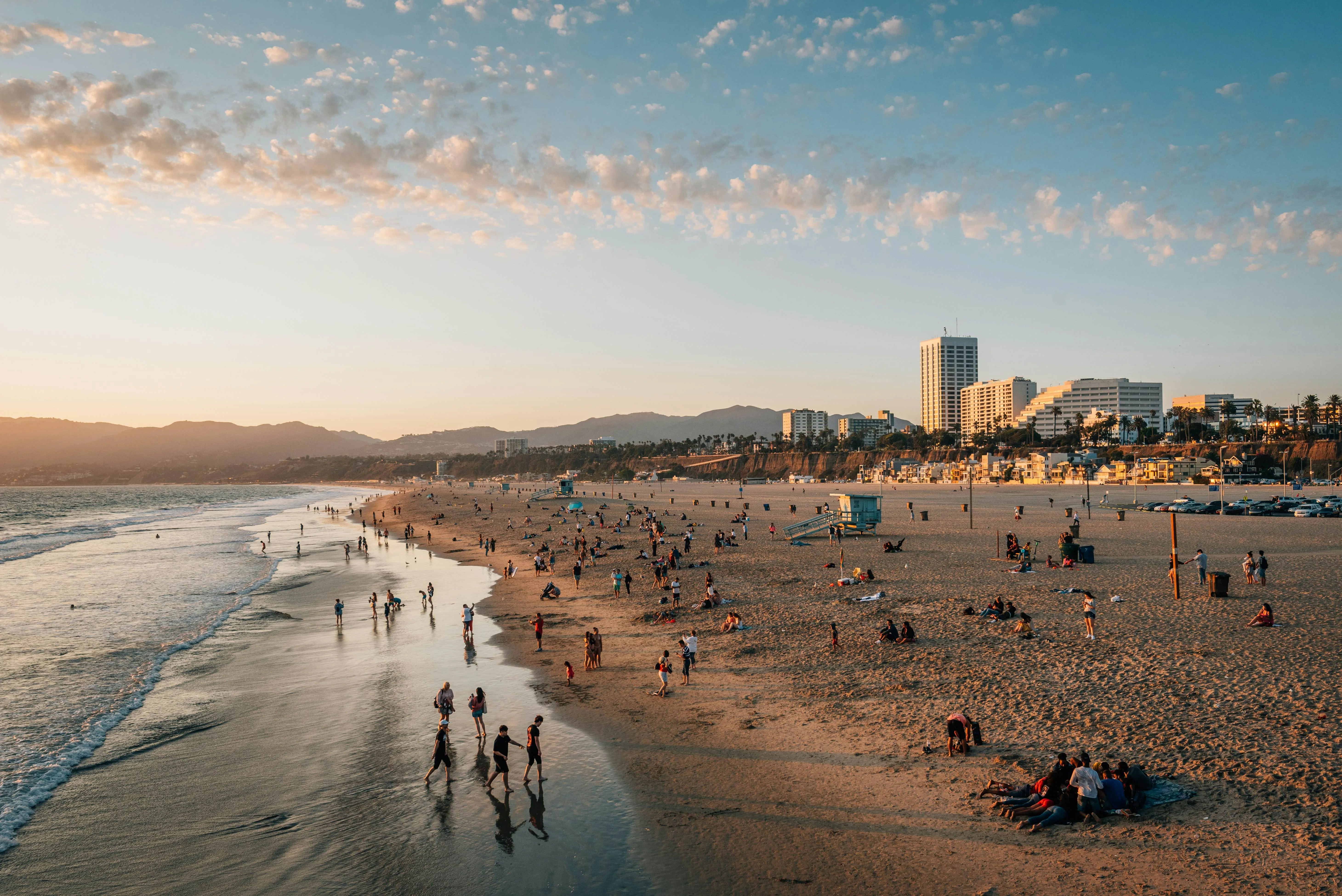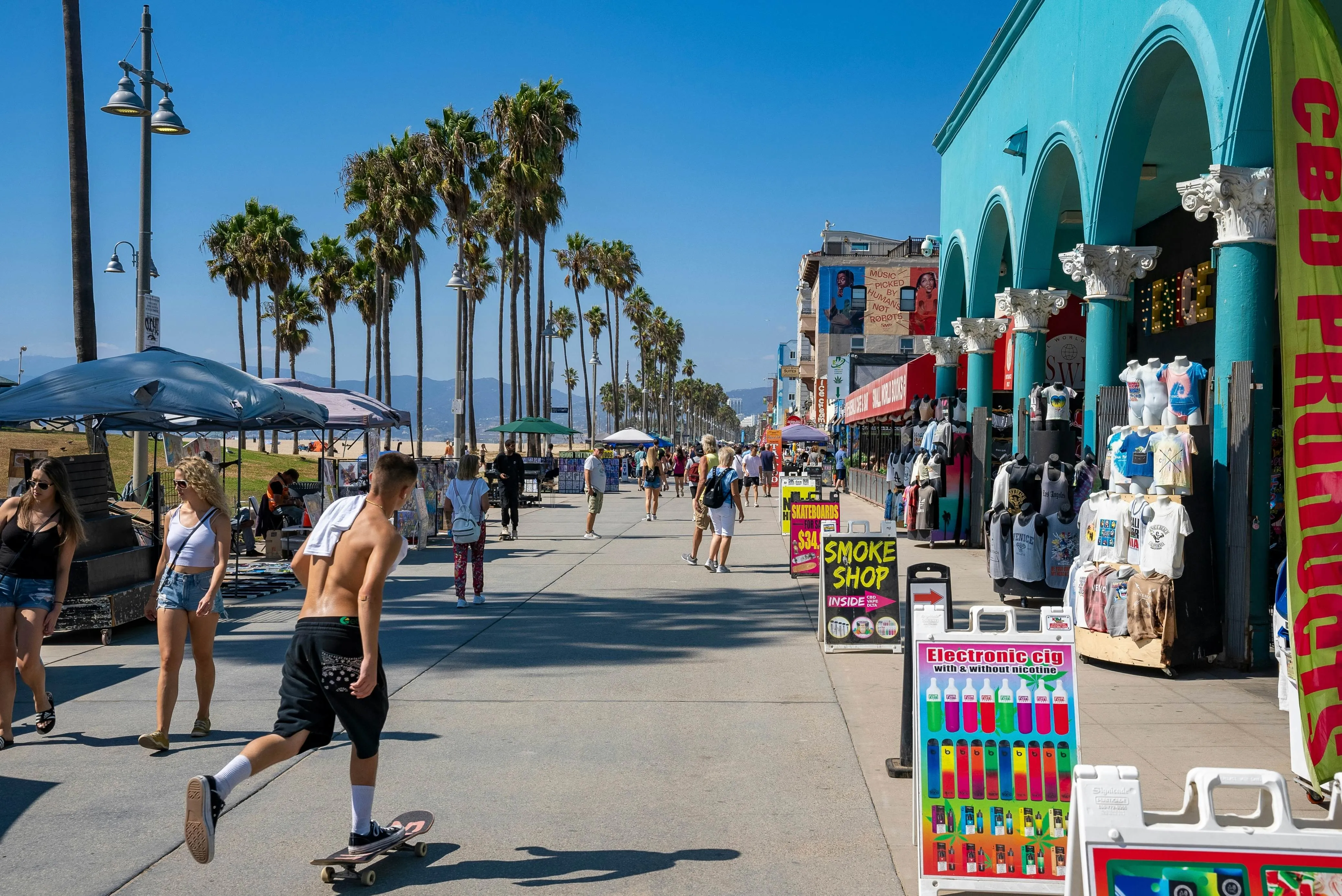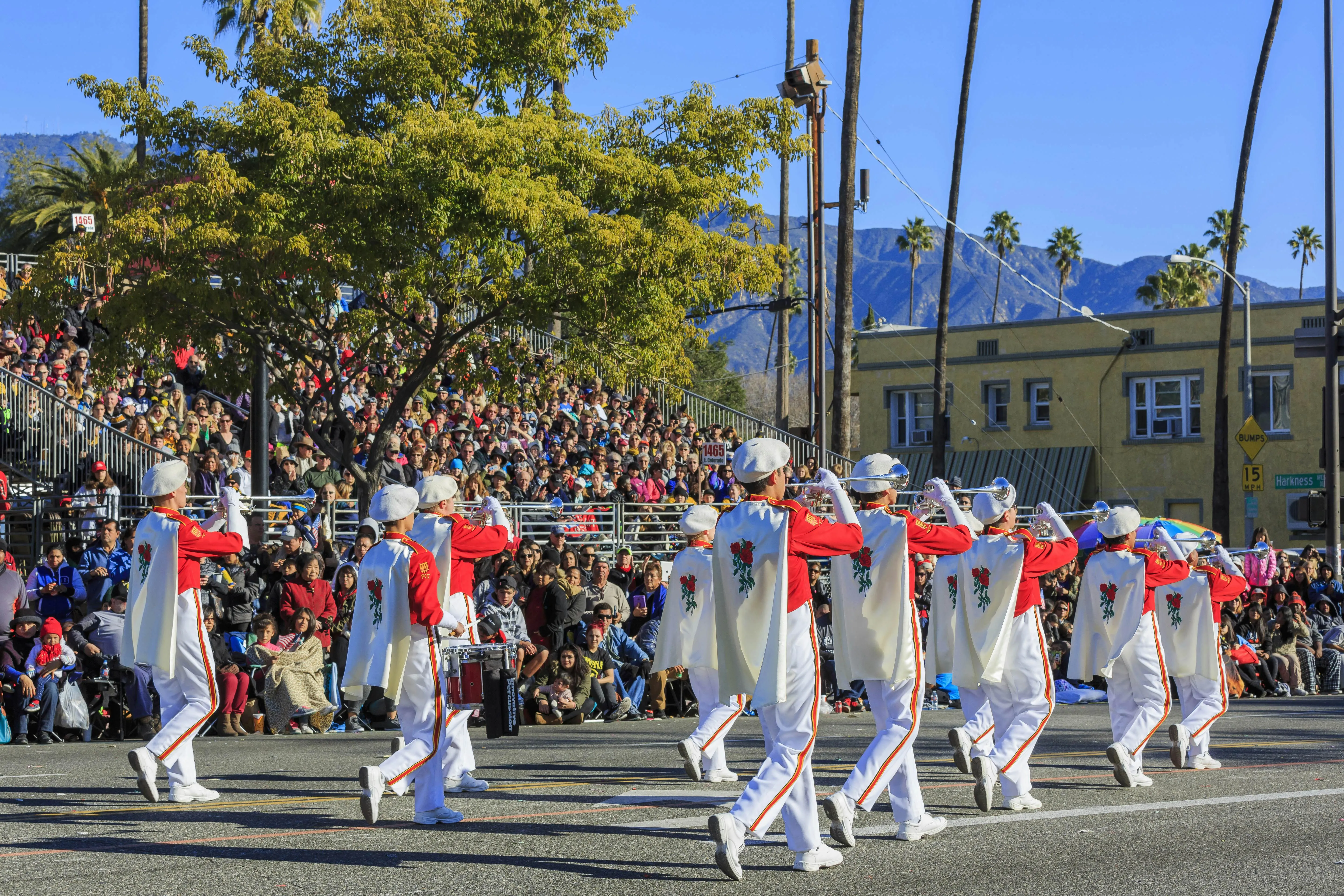Welcome to Los Angeles, a city renowned for its endless sunshine, vibrant culture, and iconic landmarks. While LA boasts a famously mild climate year-round, subtle seasonal shifts significantly impact the overall experience. Understanding these variations is key to determining the best weather in Los Angeles for your specific travel style, whether you dream of sun-drenched beaches, comfortable hiking trails, or enjoying indoor attractions away from the heat and crowds.
Each season in the City of Angels offers a unique charm, influenced by slight changes in temperature, humidity, and precipitation. From the cool, blooming spring mornings to the warm, bustling summer days, the pleasant autumn afternoons, and the mild, occasionally rainy winter periods, LA’s weather dictates the pace and possibilities of your visit. Let’s explore the distinct weather patterns and discover when you might find the best weather in Los Angeles for your perfect trip.
Spring: Often Offering the Best Weather in Los Angeles
March through May frequently presents what many consider the quintessential best weather in Los Angeles. The air is crisp yet comfortably warm, days are long, and the landscapes burst into vibrant color after the minimal winter rain. Daily high temperatures typically range from the mid-60s to mid-70s Fahrenheit (around 18-24°C), with cool, pleasant evenings. The chance of significant rain is low during this period, making it ideal for outdoor exploration.
Crowds are generally thinner than in the peak summer months, allowing for a more relaxed experience at popular attractions. This shoulder season offers a sweet spot where agreeable temperatures meet fewer visitors. It’s an excellent time for exploring gardens, enjoying outdoor cafes, or simply strolling along the coastline before the summer heat arrives.
Spring weather is perfect for activities like hiking in the Hollywood Hills or exploring the extensive trail systems in the Santa Monica Mountains. The mild temperatures make climbing elevations much more comfortable. It’s also a prime season for whale watching tours, as migrating gray whales pass by the coast heading north, a spectacular sight facilitated by the often calm spring seas.
Botanical gardens thrive in the spring. Places like Descanso Gardens showcase stunning displays of tulips, camellias, and roses. The pleasant weather enhances the experience of wandering through these beautifully curated landscapes.
The Californian desert near Palm Springs also hosts major music festivals like Coachella and Stagecoach in the spring. While the events themselves are outside the city, LA serves as a popular gateway and base for attendees, adding a lively energy to the city during these weeks, though not directly tied to the city’s weather itself.
One unique weather phenomenon to be aware of during late spring is “May Gray” and “June Gloom.” These terms refer to morning low clouds or fog that can blanket the coast. While they might obscure the sun initially, they usually burn off by the afternoon, giving way to clear skies. This morning marine layer often keeps coastal temperatures cooler, which can actually provide the best weather in Los Angeles for activities like morning runs or exploring beach towns before the sun intensifies.
 Griffith Observatory view showcasing the best weather in Los Angeles for spring hiking
Griffith Observatory view showcasing the best weather in Los Angeles for spring hiking
Summer: Peak Warmth for the Best Weather in Los Angeles Beach Escapes
June, July, and August bring the warmest temperatures and are synonymous with classic California summer vibes. This is undeniably the peak season, especially for beach enthusiasts. Average daily highs typically sit in the low to mid-80s Fahrenheit (around 27-30°C), but temperatures can soar much higher, particularly inland in the San Fernando Valley. Coastal areas benefit from ocean breezes, offering some relief from the heat.
The summer months see LA truly come alive with a carefree, energetic atmosphere. The weather is consistently sunny and hot, perfect for spending long days by the ocean. Beaches from Santa Monica to Venice and Manhattan Beach are packed with sunbathers, swimmers, and surfers. The high temperatures make staying hydrated and using strong sunscreen essential.
Outdoor events are in full swing. Summer concerts at the historic Hollywood Bowl are a quintessential LA experience, offering music under the stars on warm evenings. Outdoor cinemas also pop up across the city. The sunny, warm weather provides the ideal backdrop for these al fresco activities.
However, the summer months coincide with school holidays and peak tourist season. This means LA experiences its largest crowds, longest lines at attractions, and most significant traffic congestion. Prices for flights and accommodation also reach their highest points during this period. If your priority is soaking up the heat and enjoying the beach scene, the summer offers arguably the best weather in Los Angeles for purely warm, sunny conditions, but be prepared for the trade-offs in terms of crowds and cost.
 Santa Monica beach at sunset, perfect for experiencing warm summer weather in Los Angeles
Santa Monica beach at sunset, perfect for experiencing warm summer weather in Los Angeles
 Venice Beach Boardwalk scene showing the sunny California weather in Los Angeles
Venice Beach Boardwalk scene showing the sunny California weather in Los Angeles
Fall: Finding the Best Weather in Los Angeles on a Budget
September, October, and November offer a delightful alternative for visiting LA. The weather remains pleasantly warm, often feeling like an extension of summer well into October, particularly inland. Coastal temperatures cool slightly but remain very comfortable, with average highs in the 70s Fahrenheit (around 21-26°C). The intense heat of summer subsides, and humidity drops, creating very agreeable conditions.
One of the biggest advantages of visiting in the fall is the reduction in crowds compared to the summer peak. As schools reopen, the summer rush dissipates, leading to shorter lines and less traffic. This makes it a more relaxed time to explore the city’s many sights.
For budget-conscious travelers, fall is generally a more affordable time to visit. While prices won’t drop drastically overnight after Labor Day, they are typically lower than the summer peak. This makes enjoying LA’s attractions and dining scene more accessible. However, keep an eye on Thanksgiving week (the last Thursday in November), as travel prices spike significantly around this major US holiday.
Fall weather is perfect for exploring neighborhoods on foot, visiting outdoor markets, or enjoying alfresco dining. Events like the DTLA Film Festival and the LA Auto Show take place, adding to the city’s cultural calendar. For thrill-seekers, Universal Studios Hollywood transforms for its Halloween Horror Nights, an event made more atmospheric by the cooler fall evenings. The comfortable temperatures make evening activities very pleasant.
Winter: Experiencing Culture and Mild Weather in Los Angeles
December through February in Los Angeles offers a decidedly different, but still appealing, experience. While much of the Northern Hemisphere is dealing with cold and snow, LA enjoys mild, often sunny, “winter” weather. Average high temperatures typically range from the upper 60s to low 70s Fahrenheit (around 19-23°C). Lows can drop into the 40s (around 4-9°C) at night, so layering is advisable.
Winter is the city’s rainy season, though rain is infrequent and usually comes in short bursts rather than prolonged periods. When it does rain, some outdoor-focused venues might temporarily close. However, the vast majority of attractions remain open, and rainy days are perfect for exploring LA’s world-class museums and galleries, theaters, and indoor entertainment venues, often with fewer crowds.
The holiday season brings festive decorations to neighborhoods like Candy Cane Lane in Woodland Hills and popular spots like The Grove. New Year’s Day features the famous Rose Parade in Pasadena, an event that draws large crowds regardless of the mild winter weather. Attending indoor cultural performances or visiting art exhibitions is particularly appealing during the cooler, potentially wetter winter months.
While overall tourist numbers are lower in winter, prices can increase significantly around the Christmas and New Year holidays (mid-December to early January). Outside of this peak holiday period, winter can offer good value for travelers. The mild weather ensures that most outdoor activities are still possible on sunny days, providing a pleasant escape from colder climates elsewhere.
Where to Go After Las Vegas? Top Road Trips & Destinations
 Pasadena Rose Parade under mild winter weather conditions in Los Angeles
Pasadena Rose Parade under mild winter weather conditions in Los Angeles
Frequently Asked Questions About Los Angeles Weather
What month has the absolute best weather in Los Angeles?
Many people consider April, May, and October to have the ideal weather in Los Angeles. Temperatures are warm and comfortable, humidity is low, and there is very little rain. These months avoid the hotter summer peak and the cooler, potentially wetter winter.
Is it always sunny in Los Angeles?
While Los Angeles has a reputation for constant sunshine, it does experience some variation. Winter months (January/February) are the rainy season, though dry spells are common. Coastal areas can also experience “May Gray” and “June Gloom” – morning low clouds that usually clear by the afternoon. However, the vast majority of days are indeed sunny.
What is May Gray and June Gloom?
May Gray and June Gloom are marine layer phenomena common in coastal Southern California. They involve overcast skies and sometimes fog in the morning, caused by cool, moist air from the ocean. The cloud layer typically burns off by midday or early afternoon, revealing sunny skies. It’s a normal part of the late spring/early summer weather pattern.
